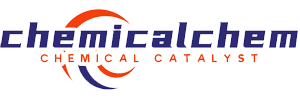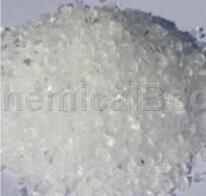background and overview[1][2]
3,4,5,6-tetrafluorophthalic acid, pure product is a white granular crystalline solid. this compound is mainly used as pharmaceutical intermediates and intermediates for the synthesis of fluorine-containing aromatic chemicals. it is a key intermediate for the preparation of ofloxacin and other fluoroquinolone antibiotics. cn102627553a, cn86106151, us5047553 and “improvement of the synthesis process of tetrafluorophthalic acid” are described in chinese journal of medicinal chemistry, volume 19, issue 1, 1999. the synthesis method is n-methyltetrafluorophthalimide. amine or n-phenyltetrafluorophthalimide are hydrolyzed in high-concentration sulfuric acid aqueous solution by heating at high temperature to produce 3,4,5,6-tetrafluorophthalic acid.
other preparation methods[1-2]
report 1. add 233g n-methyltetrafluorophthalimide, 932g 25% sulfuric acid solution, 2.3g catalyst 1 and 2.3g catalyst 2 into the reactor, and heat it to 45~50℃ , stir for 15 hours, and after passing the intermediate control, cool n to 0~5℃, keep it warm for 1 hour, suction filter, rinse the filter cake with an appropriate amount of water of about 5℃, drain it, and dry the solid at 45℃ to get 3, 227.5g of 4,5,6-tetrafluorophthalic acid, yield 95.6%, content 98.7%.
report 2. a method for synthesizing 3,4,5,6-tetrafluorophthalic acid, following the following steps in sequence:
1), add 16.2g (0.1mol) phthalic acid hydrazide to a mixture of 50ml fuming sulfuric acid (so3 mass fraction: 20%) and 50ml dilute hydrochloric acid (20wt%), and then add 0.16 the gki catalyst was mixed and stirred, the temperature was controlled at 50°c, 0.3 mol of chlorine gas was controlled, and the reaction time was 10 hours. the reaction solution after complete chlorination was cooled (cooled to room temperature) and crystallized, filtered and dried (dried at 80°c for 60 minutes) to obtain 28.3g of white crystals of tetrachlorophthalic hydrazide, with a yield of 94.3% (based on ophthalmic acid hydrazide). diformyl hydrazide), the content is 99.1%.
2). add 14.53g (0.25mol) industrial potassium fluoride into a reaction bottle containing a mixed solution of 50ml methanol, 50ml toluene and 50ml n,n-dimethylformamide. the reaction device is equipped with a reflux tube and a thermometer. and nitrogen replacement device, raise the temperature to 100°c, mix and stir for 2 hours, and perform atmospheric distillation of the reaction solution to recover methanol and toluene solutions. then introduce nitrogen protection, and add 15g (0.05mol) tetrachlorophthalic hydrazide and 1.5g catalyst (0.9g tetraphenylphosphine bromide and 0.6g 18-crown-6) prepared in step 1) into the reaction bottle , the temperature was raised to 150°c for fluorination reaction, and the reaction time was 6 hours. after the reaction is completed, distill under reduced pressure (1.33×10-3mpa), collect the n,n-dimethylformamide fraction at 40-45°c and recover it. the remaining reaction solution was added to 5°c water (about 50ml), a large amount of yellow solid precipitated, filtered and dried (dried at 50°c for 40 minutes) to obtain 10g of tetrafluorophthalic hydrazide, with a yield of 85.4% (based on tetrachlorophthalic acid hydrazide). diformyl hydrazide), content 98.9%.
3). add all the tetrafluorophthalic hydrazide (10g, ie, 0.042mol) and 6.66g (0.085mol) sodium peroxide prepared in step 2) to 65ml of water and hydrolyze at 25°c. react for 3 hours, and then adjust the acidity of the obtained reaction solution (using a hydrochloric acid solution with a concentration of 1 mol/l until the ph is 1), filter, and dry (dry at 70°c for 60 minutes) to obtain a white solid tetrafluorophthalate phthalic acid 9.2g, yield 90.5% (based on tetrafluorophthalic acid hydrazide), content 99%.
application[3]
2,3,4,5-tetrafluorobenzoyl chloride is an important pharmaceutical intermediate, widely used in the synthesis of third-generation fluoroquinolone antibacterial drugs, such as (left) ofloxacin, pafloxacin, lomefloxacin, fleroxacin, etc. have broad market prospects. cn201210027905.9 discloses a preparation method of 2,3,4,5-tetrafluorobenzoyl chloride, which belongs to the field of chemical synthesis technology and includes the following steps: the raw material 3,4,5,6-tetrafluorophthalic acid is in aromatic hydrocarbon solvents, in the presence of a catalytic amount of organic tertiary amine, react at 120~160°c until the raw material content is less than 1%. the reaction system is cooled to 20~30°c and filtered. the resulting filtrate is used for the next batch of decarboxylation reactions. , filter out the solid 2,3,4,5-tetrafluorobenzoic acid, add acid chlorination reagent and organic amide catalyst, heat up the reaction until the 2,3,4,5-tetrafluorobenzoic acid content is less than 0.5%, and evaporate the reaction system after distilling the low boiling material under reduced pressure, the finished product of 2,3,4,5-tetrafluorobenzoyl chloride is obtained. the invention has the advantages of simple steps, high production efficiency and synthesis efficiency.
main reference materials
[1]cn201610992871.5 a preparation method of 3,4,5,6-tetrafluorophthalic acid
[2] synthesis method of cn201610157868.13,4,5,6-tetrafluorophthalic acid
[3] [chinese invention, chinese invention authorization] cn201210027905.9 a preparation method of 2,3,4,5-tetrafluorobenzoyl chloride


 微信扫一扫打赏
微信扫一扫打赏

